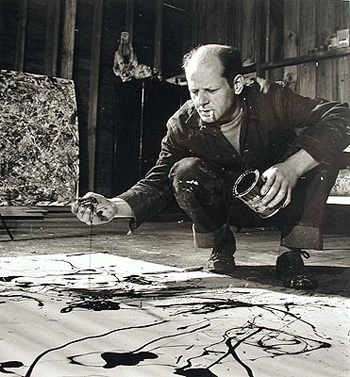See, for example, Henri Lefebvre, The Production of Space, trans. Donald Nicholson-Smith (Oxford: Blackwell, 1991), passim. See also Georg Lukács, History and Class Consciousness: Studies in Marxist Dialectics, trans. Rodney Livingstone (London: Merlin Press, 1971); Lukács, interpreting Marx on the development of abstract labor under capitalism, writes that “time sheds its qualitative, variable, flowing nature; it freezes into an exactly delimited, quantifiable continuum filled with quantifiable ‘things’ ... in short, it becomes space,” 90.
A more substantial discussion would need to take account of how the space-time continuum privileges one or the other dimension and how the primacy of each changes with economic regimes.
Henri Lefebvre, The Urban Revolution (Minneapolis: University of Minnesota Press, 2003), 1.
Ibid., vii.
Ibid., 18.
Consider such basic matters as the management of violent crime, prostitution, sanitation, and disease.
See Mike Davis, “Planet of Slums,” New Left Review 26 (March–April 2004): 6. “The present urban population (3.2 billion) is larger than the total population of the world in 1960. The global countryside, meanwhile, has reached its maximum population (3.2 billion) and will begin to shrink after 2020. As a result, cities will account for all future world population growth, which is expected to peak at about 10 billion in 2050.” (See also Davis’s subsequent book, Planet of Slums (London: Verso, 2006) for further data crunching.) Concomitantly, urban poverty is also increasing faster than rural poverty.
I leave out of consideration here the reconstruction of cities and countrysides that served—primarily or secondarily—military and police functions, whether local ones on the order of Baron Haussmann's mid-nineteenth-century reconfiguring of Paris, among other things securing it against insurrections, or more ambitious national ones such as the construction, under President Eisenhower, of the US’s Cold War-oriented interstate highway system.
Ivan Chtcheglov, “Formulary for a New Urbanism,” trans. Kenn Knabb, Situationiste Internationale, no. 1 (June 1958). See →.
Guy Debord, The Society of the Spectacle, trans. Donald Nicholson-Smith (New York: Zone Books, 1994), 12.
Today, a few generations on, the dystopian effects of the relegation of the poor and the immigrant to these high-rise ghettos, are there for all to see, if not understood by French xenophobes, in the regular eruptions of fire and revolt among unemployed young men with no future. (Today, however, the young of France and elsewhere recognize in this only a more extreme version of their own condition of economic “precarity.”)
Sharon Zukin, Loft Living: Culture and Capital in Urban Change (New Brunswick, NJ: Rutgers University Press, 1989), 190–191.
Ibid., 190.
Ibid., 117–118.
“The Arts: New York’s Best Export Industry,” New York Affairs 5, no. 2 (1978): 51. Quoted in Zukin, Loft Living, 112.
See →.
See →.
See Alvin Gouldner, The Dialectic of Ideology and Technology: The Origins, Grammar, and Future of Ideology (New York: Seabury Press, 1976).
See Caroline A. Jones’s interesting study, Eyesight Alone: Clement Greenberg’s Modernism and the Bureaucratization of the Senses (Chicago: University of Chicago Press, 2006).
John Fekete, The Critical Twilight: Explorations in the Ideology of Anglo-American Literary Theory from Eliot to McLuhan (Boston: Routledge & Kegan Paul, 1977).
See the analyses of Pierre Bourdieu in many works, including Distinction: A Social Critique of the Judgement of Taste and “The Market of Symbolic Goods,” Part One, Chapter One, of The Field of Cultural Production: Essays on Art and Literature (New York: Columbia University Press, 1984); as well as, following him, Jürgen Habermas, “Modernity, An Incomplete Project,” in Hal Foster, ed., The Anti-Aesthetic. Essays on Postmodern Culture (Port Townsend, WA: Bay Press, 1983).
Paul Fussell, Class (New York: Ballantine, 1983). The cover of the firstpaper back edition says “Class: A Painfully Accurate Guide Through the American Status System.”
Alan S. C. Ross, “Linguistic class-indicators in present-day English,” Neuphilologische Mitteilungen (Helsinki) 55 (1954), 113–149; Nancy Mitford, ed. Noblesse Oblige (London: Hamish Hamilton, 1956); Arthur Marwick: Class: Image and Reality in Britain, France and the U.S.A. Since 1930 (New York: Oxford University Press, 1980).
David Brooks, Bobos in Paradise: The New Upper Class and How They Got There (New York: Simon and Schuster, 2000). The quotation is taken from a review by Russell Mokhiber, YES! magazine, posted Oct 27, 2000, at →.
Brooks, Bobos, 11.
Ibid., 39.
…and art. In the section “How to Be an Intellectual Giant” Brooks points out that rather than writing, say, War and Peace, it is better to seek success by presenting “a catchy new idea in a lively format and casting light on what it all means,” a formula dominating art reviewing and infesting art production, the arts section of periodicals, and much else.
"Books like The Organization Man, The Death and Life of Great American Cities, The Affluent Society, The Status Seekers, and The Protestant Establishment were the first expressions of the new educated class ethos, and while the fever and froth of the 1960s have largely burned away, the ideas of the 1950s intellectuals continue to resonate." Brooks, Bobos, Introduction, 11–12. Brooks is selective in those whom he cites; several reviews have suggested his indebtedness to the work of César Graña, a professor at UC San Diego, especially Bohemian vs. Bourgeois (New York: Basic Books, 1964); Graña, who had studied sociology, anthropology and urban planning, published several other works centering on bohemianism and authenticity but died in a car accident in 1986.
Russell Mokhiber, YES! magazine, posted Oct 27, 2000, at →.
Richard Florida, The Rise of the Creative Class: And How It's Transforming Work, Leisure, Community and Everyday Life (New York: Basic Books, 2002).
